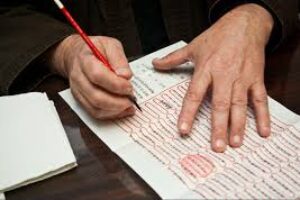
Fall retreats at the Atlantic Soto Zen Center in Halifax and our inaugural retreat at Sansuiji (“Three Streams”) were dedicated to study of Master Dogen’s Shobogenzo Sansuigyo: Mountains and Waters Sutra. It is highly recommended reading, as Master Dogen makes the case for seeing Nature for what it is, the expression of the buddhadharma of the Universe.
In this fascicle Master Dogen quotes the famous Zen aphorism that “mountains are always walking,” a counter-intuitive assertion that seems intended for shock effect, upon first blush. Later he uses the word “flowing,” which seems a bit more accessible to our modern sensibilities, with our knowledge of plate tectonics, continental subduction, etc.
The consideration of nature as buddhadharma may seem the most obvious and self-evident of Buddhist ideas, and yet it goes right to the heart of the contradiction inherent in expressing the Buddhist truth in words.
zenkai taiun michael elliston, roshi
But we should be careful not to apply academic or intellectual understanding only to Master Dogen’s teachings, nor should we interpret this particular teaching, as some have suggested, as metaphorical—i.e. using mountains symbolically to represent meditation, or the Ancestors. Here, it seems that Master Dogen has it both ways. In some passages he is clearly referring to penetrating the mysteries of nature by transcending conventional understanding; in others he directly refers to the application of these insights to practice. It would demean Master Dogen’s non-dual use of language to insist that either limited interpretation is the correct one.
The most important message from Dogen is to investigate these matters thoroughly in practice, by which he usually means to consider these ideas in light of zazen experience. Direct intuition may seem inadequate to grasp the subtle meaning of buddhadharma as found in experience, both of Nature and our own buddha-nature, but it, meditation, is recommended as a more reliable source of insight than intellectual analysis. In fact, the latter process, which is the way we approach most subjects, finally results in ambiguity, as one set of dualities at which we arrive is revealed as complementary poles in the concrete reality. That is, Nature is both the manifestation of buddhadharma and simultaneously has nothing at all to do with buddhadharma. Buddhadharma is a name, which is necessarily conceptual and dualistic in its origin as language. But unlike most nouns, it is pointing at something that is real, but non-existent as an object.
The consideration of nature as buddhadharma may seem the most obvious and self-evident of Buddhist ideas, and yet it goes right to the heart of the contradiction inherent in expressing the Buddhist truth in words. The three great Chinese teachers—Kanchi Sosan, Sekito Kisen, and Tozan Ryokai, from the 7th, 8th and 9th Centuries CE, respectively—point at this. Their poems, chanted as liturgy in Soto Zen—Faith in Mind (J. Hsinshinming); Harmony of Difference and Sameness (J. Sandokai); and Precious Mirror Samadhi (J. Hokyo Zammai), were composed about a century apart, and evidence some telling differences as well as understandable sameness. We will study them in detail at 2014 retreats and during Sunday dharma dialogs, along with the rest of the Soto Service liturgy.
In the first of these great works, also the longest, the closing stanza says:
Words! The Way is beyond language for in it there is no yesterday no tomorrow no today.
In the second, we find:
Hearing the words understand the meaning do not set up standards of your own.
And in the third, by the founder of Soto Zen:
Although it is not constructed it is not beyond words.
And earlier in the same text:
The meaning does not reside in the words but a pivotal moment brings it forth.
Which brings us to the point: that the truth of Buddhism is to be grasped experientially, in a pivotal moment, rather than in words. This non-constructed nature of direct realization is pointed to repeatedly by Master Dogen in his many fascicles on zazen, which often update ancient Chinese Masters in the context of 13th Century Japan. Ancestors are all speaking with the same voice, going all the way back to Shakyamuni Buddha. In fact, according to Buddhism’s more mystical or transcendental view, they are all the same person. This is one way of understanding Master Dogen’s frequent referrals to an individual Ancestor as an “old buddha.”
The salient fact—the “take-home” for those of us practicing today—is this admonition: that while words can point at this truth, they cannot reach it. The pivotal moment is not just the main thing; it is the only thing. We can recognize this in our practice—that is, recognize that we have not reached this pivotal point—which is the first step toward reaching it. We can at least know for sure when we are not practicing non-thinking or non-doing. But we cannot strive to achieve either of these, nor can we directly attain the pivotal point through effort or will. This is the dilemma beyond even words or language. The futility of striving. What is to be done? What action can we take?
Of course, zazen is the prescribed action, and its deep stillness is considered great action. As Master Dogen reminds us in Acupuncture Needle for Zazen (J. Zazenshin):
The intimacy without defilement is dropping off without relying on anything. The verification beyond distinction between absolute and relative is making effort without aiming at it.
So once again, even in the realm of action beyond words and letters, we are left with a kind of ambiguity, when it comes to expressing or explaining this process in words. Dropping off (of body-mind) is something we cannot intentionally do, any more than we can intentionally engage in non-thinking. But we can know for sure when we are relying on something, like thinking, or on anything else. And by recognizing that fact, we have the opportunity to stop relying on that, whatever it is, for the first time. We also know for sure when we are aiming at something, some goal or expectation that we dragged into the zendo with us. In recognizing it as excess baggage, it becomes possible to put it down, for the first time; and perhaps to leave it at the door the next time we enter the zendo, or approach our cushion at home.
There is a famous Zen story, its origin lost to memory, wherein a monk enters the building hauling two buckets of water. The teacher says “Put it down!” whereupon the monk sets one bucket on the floor. The teacher again says “Put it down!” and the monk sets the other one down. When the Master says a third time “Put it down!” the junior experiences profound awakening.
The directive is crystal clear in all of this record of transmission. At the end of Sandokai, the middle and most mercifully brief of the three, Master Sekito follows up on his admonition to understand the meaning of the words rather than setting up your own standards:
Not understanding the Way before your eyes how will you know the path you walk? Progress is not a matter of far or near but if you are confused mountains and rivers block your way.
Setting our own standards blinds us to the manifestation of the Way before our eyes. The very mountains and rivers that Master Dogen assures us are continuously expounding the dharma faultlessly, themselves become a barrier to progress when we are confused by our senses, and ideas. And yet, Master Kanchi Sosan reminds us:
If you wish to move in the One Way do not dislike even the world of senses and ideas.
Indeed to accept them fully is identical with true Enlightenment.
So simply rejecting the whole world of the intellect is just another intellectual discrimination. Note that the language is one of acceptance, rather than rejection. This means accepting our own weaknesses, but ceasing to indulge them in this endeavor.
Our first task is to put down our tired and tiring tendency to try to grasp everything in words and concepts, which has served us so well so far, in ordinary commerce and social interaction. The next is to put down the baggage we are carrying with us, which may be of a less obvious kind. The third is finally to put absolutely everything down that we may be relying on all unconsciously. For that to happen, we must first allow it to rise to the surface in the unblinking scrutiny of zazen. Once we see what we are putting in our own way, we can, finally and gratefully, “Put it down!” And for the first time truly enter into the walking of mountains and the sounds of the river streams.







